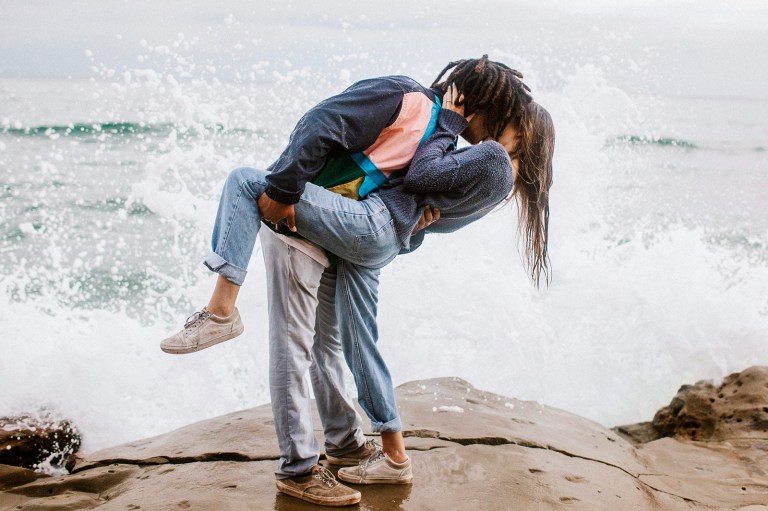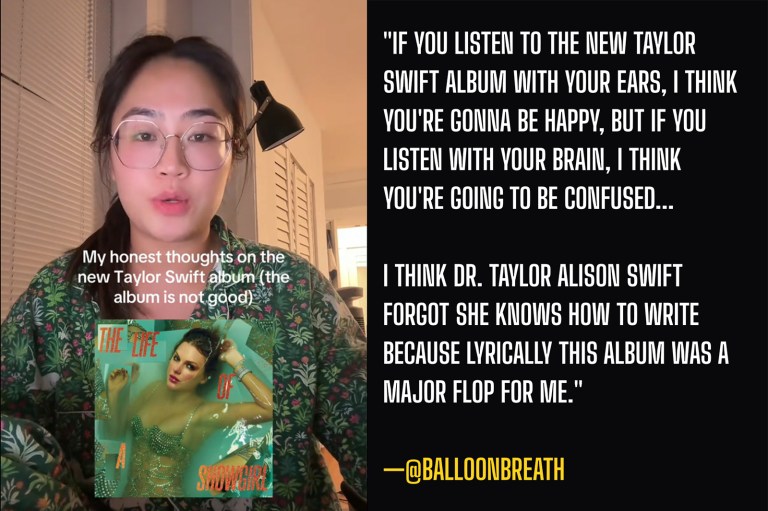
When Anxiety Makes You Feel Like You Are In Danger Every Day Of Your Life
It’s as if all the horrific worst-case scenarios flashing through your brain were actually happening.
“Picture a place where you felt safe and secure.”
I sat on the small couch across from my therapist, hands clenched in my lap, feet rocking.
It wasn’t meant to be a challenge. It wasn’t supposed to be difficult. She was merely trying to walk me through a visualization exercise, teaching me a tool to help me calm my anxious thoughts the next time they began to spiral.
But at those words, I felt a sense of panic rising. I searched my mind; my thoughts began to race. Tears stung my eyes as I stared down at my whitening knuckles.
I couldn’t think of a single place. Not one.
Let me say this: In my rational thoughts, I know that I have been safe and secure for the vast majority of my days. I have lived a privileged life.
Knowing that rationally does not change the fact that my anxiety disorders have manifested in ways that have infected every moment I can remember, every thought in my mind.
I could not think of a single place or time when I felt safe and secure. At the forefront of every memory of all my favorite places was the worry and fear attached to it.
I can recall more clearly how I felt and what I was worried about in a moment than I can the actual event.
That beautiful spot where I lounged by the ocean on my honeymoon? Terrified that it would be my last vacation because of cancer.
My childhood home? Overwhelming fear of abandonment in every way imaginable.
The peaceful balcony room on the beach in Tulum? Racing thoughts of all the ways I wouldn’t make it home to my kids: drowning, venomous spider bite, car accident, airplane crash, falling off a cliff, the balcony itself collapsing, you name it.
My own comfortable bed now? Constant fears that my husband or my kids might stop breathing in the night, that someone might break in, that the house will catch fire, that my husband will leave me, that I’ll get sick again.
For a long time, I just labeled myself as a “worrier” and I downplayed how much of an impact these thoughts had on me. In a “suck it up” culture, I felt that acknowledging — admitting — that these thoughts were disrupting my life — that they prevented me from enjoying the moment, that they obscured my memories — meant nothing more than I needed to “toughen up,” that I needed to stop “making mountains out of molehills,” that it was all my fault.
On top of that, I have a deep-rooted need to make sure I am not a burden to everyone around me. A need that, no doubt, grew into what is now the social anxiety disorder in my cocktail of anxiety disorders.
As a result, I became very good at masking my anxiety in front of others, of always appearing to hold the belief that everything was “no big deal.”
I function by performing a role, putting on a mask of a me that handles everything well. But, there is a cost — nausea, diarrhea, vomiting, incredibly tense and painful muscles, headaches, insomnia, and spiraling thoughts for days. When I can’t maintain a performance, I slip into a panic attack — heart palpitations, shortness of breath, lightheadedness, numbness and tingling in my hands, arms, and face, muscle weakness.
Up until I started therapy, I still believed that I had no reason to feel the way I felt. I never recognized a single experience in my life , which included great losses and instability in my formative years, being a cancer patient, and a near-death birthing experience, to name the most prominent — as being traumatic. Even now, I still feel like I am being overly dramatic to call these traumas. Others have it so much worse. Why am I making such a big deal out of everything?
It was a tremendous help when my current therapist explained, in one of our first sessions, that our brains do not do well with distinguishing different types of traumas — traumatic experiences of varying magnitudes can have similar effects. At her words, I felt I had been granted permission to feel what I have been feeling for years.
I, of course, turned to the internet, searching for further validation. I came across an article by Elyssa Barbash Ph.D. and read these words:
“Small ‘t’ traumas tend to be overlooked by the individual who has experienced the difficulty. This is sometimes due to the tendency to rationalize the experience as common and therefore cognitively shame oneself for any reaction that could be construed as an over-reaction or being ‘dramatic.’
“Avoidance is also engaged so as not to reveal any ‘weaknesses’ or difficulty to others… While the individual’s efforts are intentional with the hope of reducing their psychological distress and not creating concern on the part of others, the literature has made clear that avoidance is the most significant developing and maintaining factor for trauma responses. So ‘tough,’ perhaps yes, but effective, no.”
Validation. Permission to accept that I have experienced traumas. And the knowledge that not properly processing these events — avoiding and concealing how much they truly affected me — only allowed them to be compounded into my varied escalating anxiety disorders.
Still, I feel terribly misunderstood, and I struggle with “suck it up” culture. I know there are people who hear the term “anxiety disorder” and roll their eyes. To them, I am a whiner, a complainer, weak. I simply need to toughen up. I need to stop being such a sensitive little snowflake. After all, everyone has anxiety.
Here’s the thing: yes, everyone experiences anxiety. Anxiety is a normal, healthy emotion. People without any mental health concerns will feel anxious about certain situations. That can make it hard for those people to understand why others struggle so much with anxiety. And it can make those of us struggling question ourselves as well.
I recently tried to explain the difference between feeling natural anxiety and having an anxiety disorder to an empathetic friend.
It had started snowing and my anxiety about driving home was building. Now, it is reasonable for anyone to feel a bit anxious about driving in the snow — to think about how they’ll need to drive more carefully, how travel will take longer and they need to plan accordingly, maybe even think about the possibility of accidents or getting stranded.
For me, I have all those worries and more on a perfectly clear day of driving. Every car I pass, every turn I make, my mind visualizes the accident that could result. I see in gruesome detail that I won’t make that upcoming turn and I’ll plow into that tree, my body slamming against an undeployed airbag upon impact. Thirty seconds after I survive the turn, I see that the oncoming truck will veer into my lane and my daughter will be thrown from the car lying lifeless on the pavement. Less than a minute later, I worry that I won’t see the car in my blind spot as I switch lanes and we will spin out, flip, and end up in a ditch. Several times over the course of an hour on the highway, I clearly see in my mind that we’ve been in an accident, my husband and children are bloodied and mangled, and I live my worst nightmare by surviving without them.
This part of my anxiety disorders is called catastrophizing. I cannot emphasize enough that this happens entirely involuntarily. It is my default. Believe me, if I could simply stop worrying about these things, I would. If it was as easy as deciding to think happy thoughts, don’t you think I’d do that?
It takes a great deal of effort to stop and redirect these anxious thoughts. A task that becomes even more difficult when I am trying to navigate while driving. Yet, I am able to manage. I still drive (though I do avoid it often and almost never drive with my whole family in the car, anymore). For some, this becomes so overwhelming that they can no longer bring themselves to get behind the wheel.
Now, think about the type of normal anxiety everyone experiences in a multitude of situations and multiply it accordingly for someone with an anxiety disorder. This is not only about driving.
In every situation, nearly every day, my mind feeds me a vivid reel of all the worst things that can go wrong, of every worst-case scenario — people I love getting hurt, sick, dying, saying they don’t love me, they never actually liked me, friends only tolerate me, I am annoying, editors don’t like working with me, I have nothing good to offer, everyone is going to leave me, I’ll get sick again, I am a burden.
It is exhausting.
I knew my anxiety disorders were affecting my daily life. I knew they began long before I recognized them for what they were. I knew they had grown severe enough that I could no longer manage them on my own — even my unhealthy coping mechanisms were no longer effective. That is why I sought the help of a therapist.
“Picture a place where you felt safe and secure.”
But it wasn’t until I struggled with this simple request to think of a place where I felt safe and secure that I realized what, exactly, my anxiety disorders had done. They had me living every single day of my life as if I were in actual danger, as if all these horrific worst-case scenarios flashing through my brain were actually happening.
Though I rationally and logically knew these things were not likely to happen, my body was reacting to the anxiety so much so that it is etched into every single memory I can recall.
I will be continuing therapy in hopes of reclaiming some of these memories and with the desire to better manage my anxieties going forward. It wasn’t always this bad; so I have hope that it can get better.
If you find that you would also have a hard time thinking of a time and place where you felt safe and secure, I urge you to please consider seeing a therapist.
It can get better. ![]()











